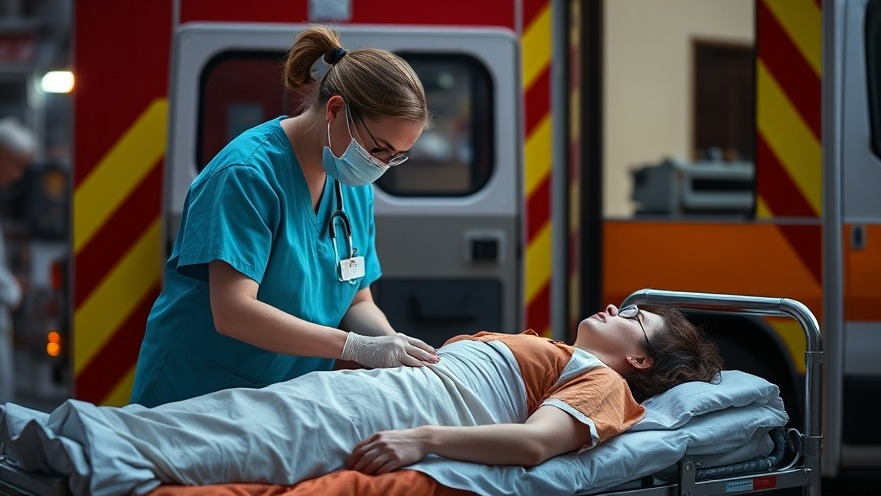
Understanding the Critical Importance of Bleeding Control
In the realm of emergency response, knowing how to control bleeding is paramount. For concierge health practitioners, understanding this vital skillset not only enhances their ability to react effectively in emergencies but also elevates their community's perception of their practice. While injuries can happen at any time, being prepared can mean the difference between life and death. As technology plays a significant role in health care today, integrating emergency preparedness into practice can ensure patients feel secure, knowing their providers can handle crises effectively.
Initial Assessment: Assessing the Situation Efficiently
The ABC method (Alert, Bleeding assessment, Control) serves as a simple framework for practitioners to recall when facing a bleeding emergency. First, it is essential to Alert Emergency Services by calling 911 immediately. The need for rapid response cannot be overstated. Next, a thorough Bleeding Assessment is vital: assess the wound’s depth, size, and location while looking for signs of shock. Assessments will guide your decision on how to control the bleeding, whether through direct pressure, packing a wound, or utilizing a tourniquet.
Direct Pressure: First Defense in Managing Bleeding
The application of direct pressure is the first line of defense in controlling bleeding. Use sterile gauze or a clean cloth to apply pressure to the wound site and maintain that pressure for at least 5-10 minutes. Elevating the injury above heart level can further reduce blood flow. If bleeding doesn’t slow to a trickle, practitioners should consider wound packing as a subsequent step.
Wound Packing: A Technique for Severe Bleeding
Wound packing is a critical skill for managing severe bleeding. It involves filling the wound cavity with sterile gauze to apply direct pressure and promote clotting, making it especially useful for deep wounds (such as from gunshots or stabbings). To pack a wound, stuff it with absorbent materials like hemostatic gauze, pressing down hard until emergency responders arrive. However, it’s essential to remember that this method may not be suitable for deep-organ injuries and is intended for specific emergency scenarios.
Utilizing Pressure Points: Targeting Major Arteries
For bleeding from extremities, learning to apply pressure to specific points can be a lifesaver. Pressure points can be used effectively alongside direct pressure. Practitioners should learn where to apply pressure on major arteries such as the carotid, femoral, and brachial arteries to help control the blood flow and buy time in critical situations.
Tourniquets: A Life-Saving Tool in Extremity Injuries
When bleeding is severe and does not respond to other techniques, a tourniquet may be necessary. Proper training in applying a tourniquet is essential, as incorrect usage can lead to complications. The application should be tight, and it should never be removed once applied until a medical professional can assess the situation. Increasing awareness of tourniquet use is vital for all health practitioners, especially in emergency health settings.
Preventive Education: Creating a Community of Preparedness
While knowledge of bleeding control is crucial, equipping the community through training programs is equally important. Organizations like the American College of Surgeons provide courses that teach life-saving techniques such as bleeding control. Practitioners should advocate for these programs in their communities, enhancing not only their own skills but also elevating community health standards.
Final Thoughts: Elevate Your Practice and Community Health
Integrating bleeding control education into your practice strategy not only prepares you for emergencies but also establishes your practice as a center of knowledge in the community. As the world becomes increasingly unpredictable, being equipped to handle emergencies confidently will attract patients seeking a provider they can trust. Remember, knowledge is power—getting trained in bleeding control techniques can save lives.
 Add Row
Add Row  Add
Add 






Write A Comment